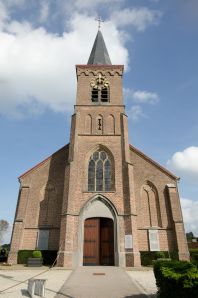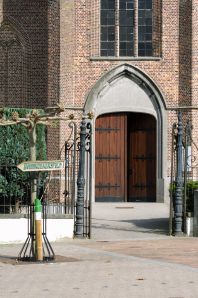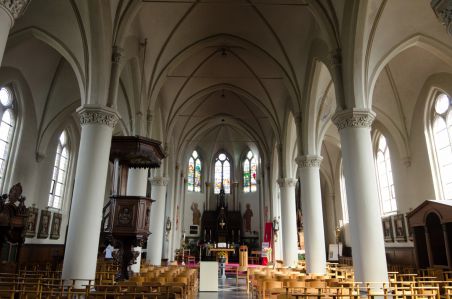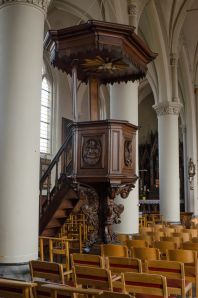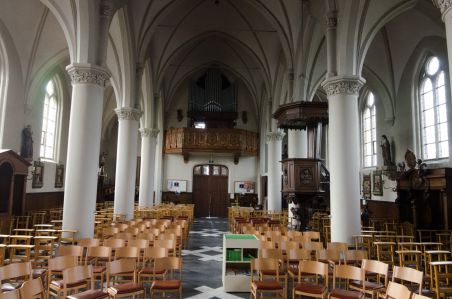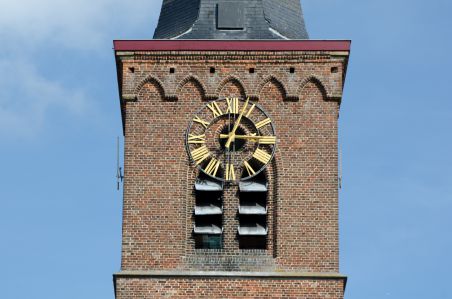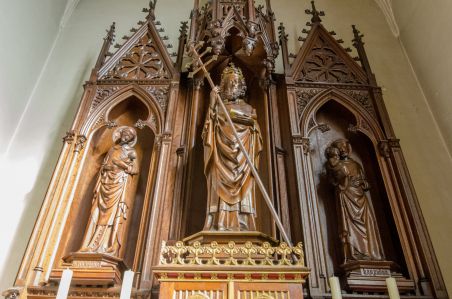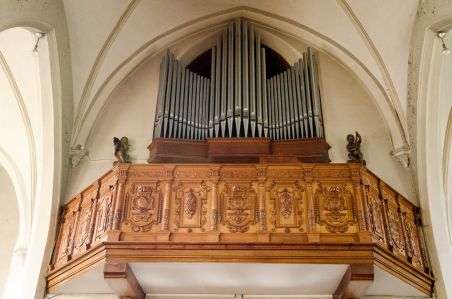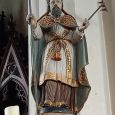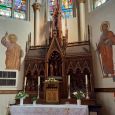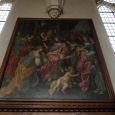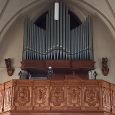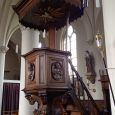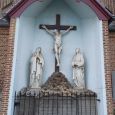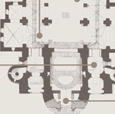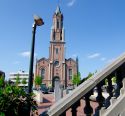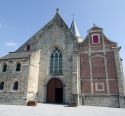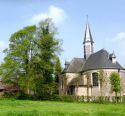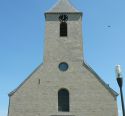Church | 1856 | Neogothic | Catholic Church


Map
Opening hours
01 January - 31 December
Mon 9.00 - 17.00
Tue 9.00 - 17.00
Wed 9.00 - 17.00
Thu 9.00 - 17.00
Fri 9.00 - 17.00
Sat 9.00 - 17.00
Sun 9.00 - 17.00
Guided tour
+32 473 67 14 64 - p.a.matthijs@telenet.be
Religious offices
only funerals, weddings and occasional celebrations
Description
The present church is located on the old church site of this centuries-old village and adjacent to one side of the cemetery. Already in the 12th century there would have been a house of prayer. Serskamp was then ”one of the Count’s own villages”, along with 20 other villages in the region of Aalst. This meant that the village was directly under the authority of the Count of Flanders, and he had special rights there, like administering justice.
In 1848 the city council decided to replace the church, which fell into decay and became too small. However, the construction work could only start after 1855, when priest and architect Jan-August Clarysse, assistant priest of Wingene at that time, came up with suitable plans. A three-aisled neo-Gothic church was built, dedicated to Saint Dionysius. The bluestone memorial stone to the right of the portal refers to the first stonelaying in 1856.
The church is built in red “karelen”, building material coming from the nearby 'stone-village' Rupelmonde. The tower has five sections which are different in height, and a highly constricted octagonal slate spire on top.
On the outside a covered calvary stands against the choir. In the front you see a call to commemorate the deceased family and pray for their souls. Central under the Calvary mountain a commemorative plaque is put in an arched cut-away. In memory of Petrus Livinus Dalschaert, deceased in 1871. There are also memorial tablets in memory of F. Dalschaert and A.M. Van Hauwermeire. In 2001 two restored late 18th-century tombstones of clergy were placed against the façade of the church.
The church was conceived as a total work of art and it was decorated in the Gothic Revival style. Unfortunately, the colourful neo-Gothic frescoes were overpainted in the 1970s. Only in the choir several murals were spared.
Photos
Remarkable elements
Statues of Saint Blaise of Sebaste and Saint Denis of Paris
On the pillars of the choir stand two wooden polychrome statues that originate from the convent of the village of Tussenbeke : Saint Blaise of Sebaste (here), for whom there was a special veneration in the convent, and Saint Denis of Paris. Both statues date from the 17th century.
Main and side altars
The three oak altars in the choir were made by Séraphin de Maertelaere (1855-1928), a sculptor from the village of Wetteren : the main altar - the altar of Our Lady (to the left) - the Cornelius altar (to the right).
The neo-Gothic altars with artfully executed woodwork form from a stylistic point of view, a whole with the architecture.Painting “Jesus, friend of little children” (17th century)
Above the churchwarden’s pew, hangs a painting called “Jesus, friend of little children” (190 x 175 cm). It is by an unknown master, although closely resembling the works of the Brussels painter Hendrik De Clerk (about 1560-1630) or the Antwerp painter Frans Floris de Vriendt (1519-1570).
The painting was donated to the church in 1625 by the archbishop Jacobus Boonen from the city of Mechelen. He donated it after visiting the church and seeing the bad condition the building was in.
Organ
The organ was built in 1958 by the organ builder Verschueren from the city of Tongeren, for the centennial celebration of the church. This new instrument replaced the previous organ that was installed in the church in 1858. The two musical angels to the left and the right of the organ, are remnants of that organ. The railing of the rood screen was also renovated in 1958 and was made by carpenter De Neve from the village of Lede.
Pulpit
The origin of the pulpit in the middle of the church is also only vaguely known. In 1779, the church of the village of Serskamp bought the pulpit from the church of the village of Gijzegem, where a new pulpit was installed at that time. The volutes that form the base of the pulpit could possibly have been originally a part of the pulpit in Gijzegem. The rest of the furniture is style-wise from a later time period. The tub is decorated with medallions that represent the busts of Saint Peter, Saint Denis of Paris, and Christ.
Calvary
On the outside, against the wall of the choir stands a calvary. This too refers to an ancient Christian tradition. At the foot of the crucifix, stand the statues of Our Lady and Mary Magdalene.



